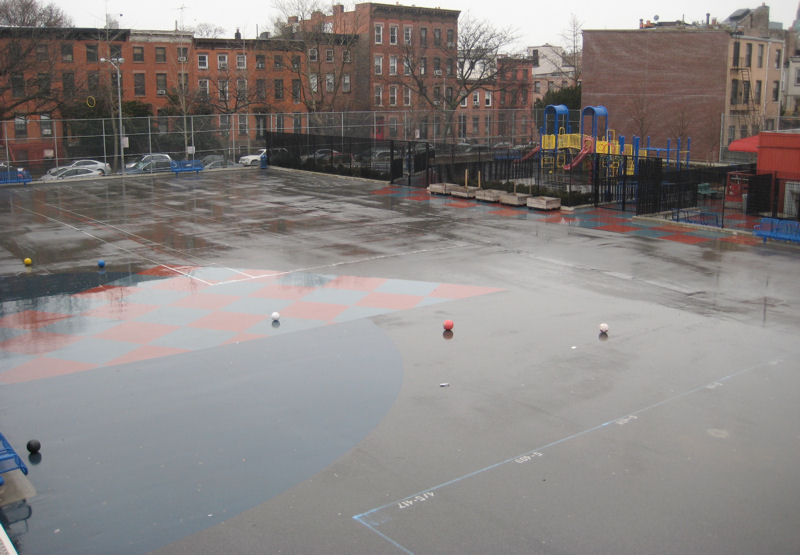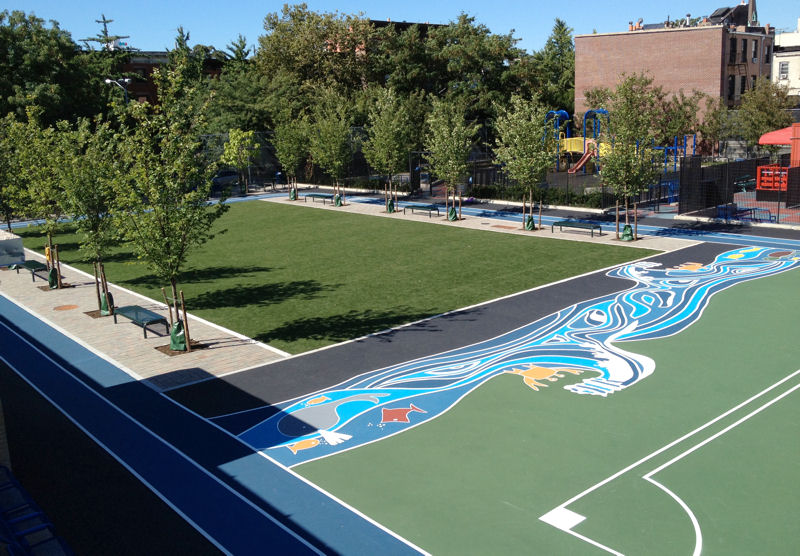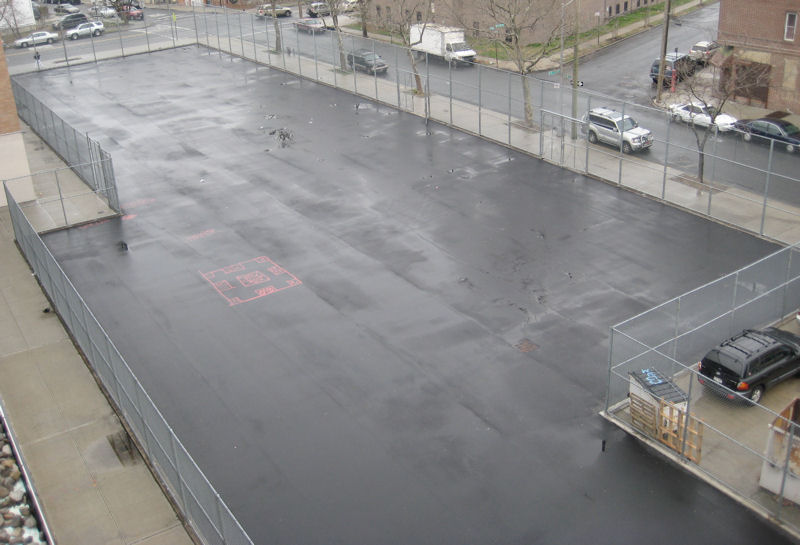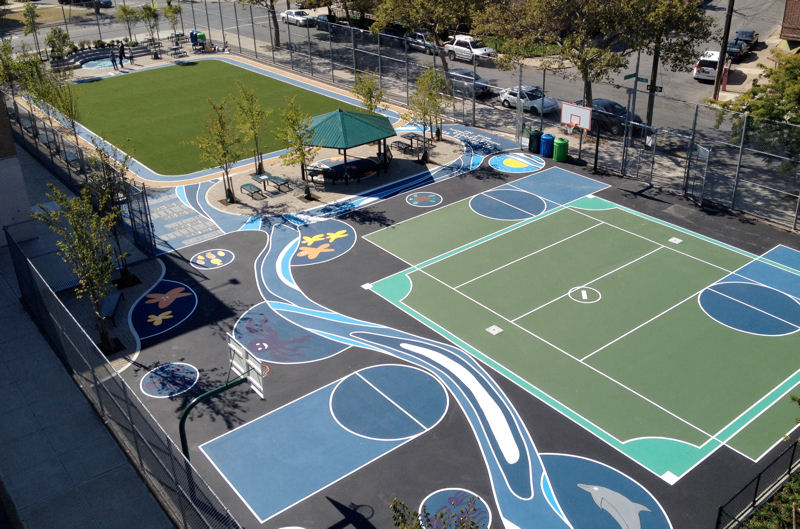Second-graders at Public School (P.S.) 261 in Brooklyn, N.Y., most likely are suffering fewer skinned knees these days.
That’s because the elementary school’s hard asphalt playground now has been replaced with a garden, trees, an outdoor classroom, an open play area, and a multitude of other child-friendly features.
But the colorful, new, parklike playground is not all fun and games. It also has been designed to soak up the first inch of water that falls on it each time it rains, preventing nearly 1890 m3 (500,000 gal) of stormwater from entering the city’s combined sewer system each year. It also reduces the amount of stormwater runoff emptying into the nearby Gowanus Canal, which historically has had frequent overflows that flood local streets and basements.
P.S. 261’s playground officially has been enlisted in New York City’s broad-scale effort to reduce combined sewer overflows (CSOs). And the 786 students who spend their recesses there couldn’t be more delighted.
Greening New York City’s public school playgrounds
The playground at P.S. 261 is the first of as many as 40 new green public school playgrounds that will be installed throughout New York City during the next 4 years, according to Mary Alice Lee, director of The Trust for Public Land’s (San Francisco) New York City Playgrounds program. Playground makeovers are made possible by a new partnership between the city and The Trust for Public Land, a nonprofit organization that completes park and conservation projects nationwide, including 25 playgrounds installed at New York City public schools before this program.
Now, the New York City Department of Environmental Protection (DEP), which manages the city’s water supply, is getting involved. The program is one of the newest components of the $2.4 billion Green Infrastructure Program launched by DEP in 2010 to reduce CSOs and improve the city’s water quality.
Each new playground will be unique, with features selected based on the playground’s size and layout, as well as the needs of the particular school, Lee said. Green features will range from green roofs on storage sheds, to rain gardens and rain barrels, to artificial turf fields with a gravel base that allows stormwater to pass through and be absorbed into the ground.
Asphalt isn’t eliminated completely, Lee said. “You’ll still find it used on the basketball courts. But the courts are now pitched so stormwater runoff ends up in tree pits or on turf fields,” she said.
And students are involved in the design process, creating playgrounds with some unconventional elements alongside more traditional soccer and football fields. “Older [high school] students expressed an interest in spaces for hanging out, as well as fitness equipment geared for their age group,” Lee said. At some schools, student requests also resulted in the addition of outdoor ping pong tables and stages for impromptu performances.
High price tag results in unexpected benefits
The price tag for approximately 4050 m2 (1 ac) of new playgrounds is not cheap; each one is expected to cost $1 million or more. But one of the best things about the program is that those costs are spread across multiple organizations, Lee said.
DEP is paying for the turf-fields and gravel that promote drainage with a $5 million contribution to the program each year, according to DEP Commissioner Carter Strickland. “These projects will also help raise awareness in the next generation of New Yorkers about the connection between … fields that absorb stormwater and a cleaner harbor,” he said.
The New York City Department of Education also is chipping in to purchase the track and playground equipment, while landscape architecture, soil testing, and play design are funded by The Trust for Public Land. Corporate and private donors are stepping up to help as well. “These partnerships make the projects possible,” Lee said.
The amount of stormwater each playground collects will vary, but is expected to average between 1140 m3 to 1890 m3 (300,000 gal to 500,000 gal) per year. But payback for the playgrounds should not be measured only by the amount of stormwater they keep out of the city’s sewers, Lee said.
Three Brooklyn schools where the playgrounds already are installed have reported a decline in student tardiness. “We’re told the children are now more anxious to get to school so they can play before class starts,” Lee said.
New playground features also are helping to get some formerly sedentary children moving. “Before, some children just stood by a fence throughout recess. Now they have a stage where they can sing and dance. Students that might have been inclined to fight can now expend energy by running around the track,” Lee said.
Students also are learning about plant life, and are being called on to water and weed the gardens. “These students typically live in apartments that have no backyard,” Lee said. “With these gardens, they are learning to dig and plant. It’s good for them to see where strawberries really come from.”
Plus, now there is an abundance of soft grass and a corresponding decline in skinned knees. As any parent will tell you: you cannot put a price on that.
— Mary Bufe, WEF Highlights












November 7, 2013
Featured